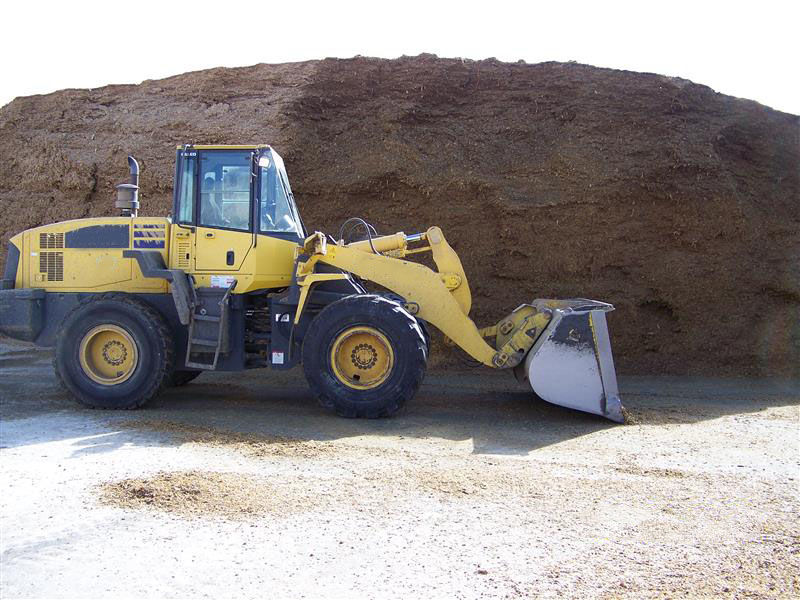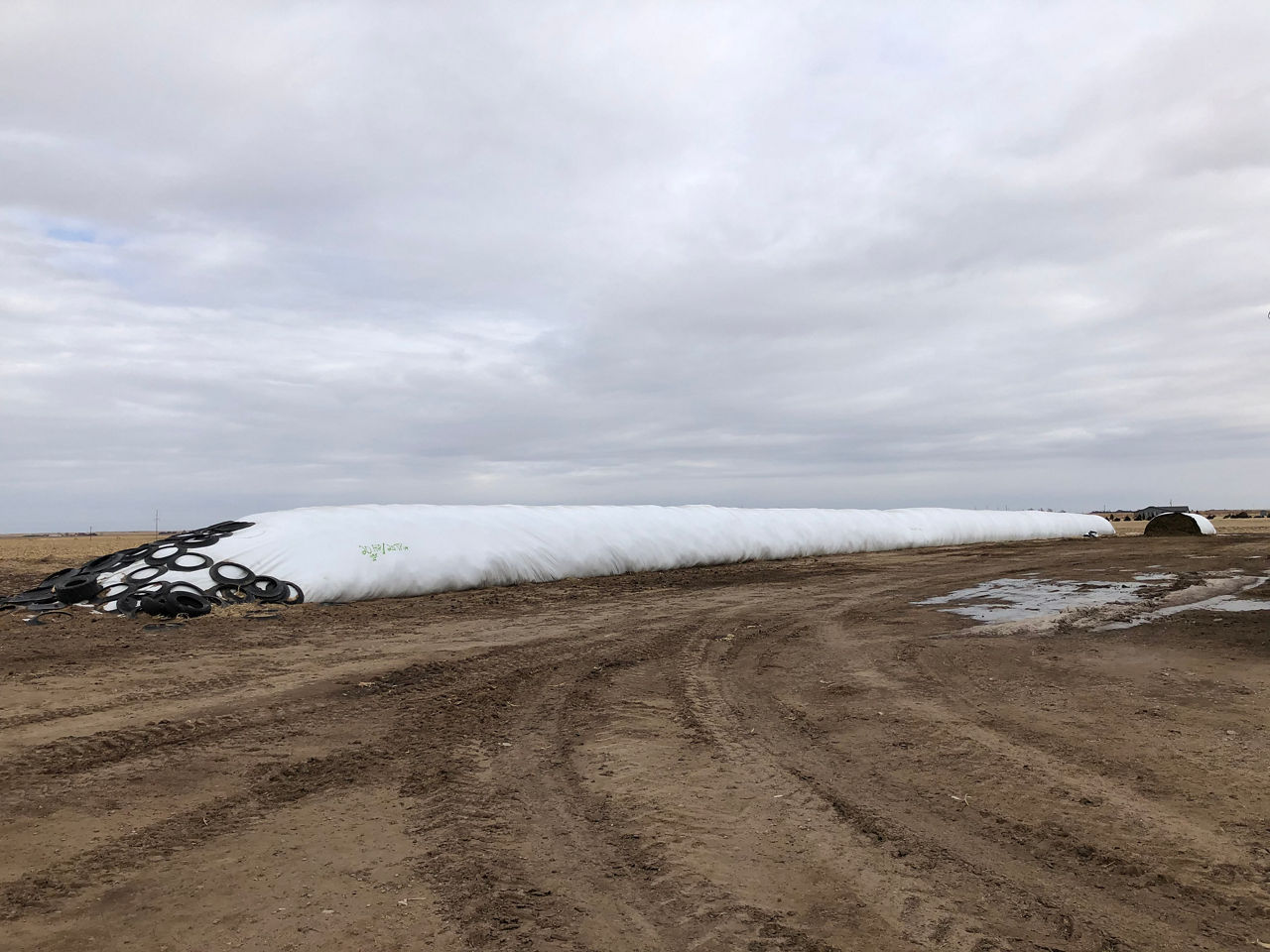10 MIN READ
Corn Silage Quality and Inventory Management
February 3, 2021
Quality Corn Silage
To ensure a high-quality silage feed source it is important to correctly follow all the critical steps during silage harvest and silo fill. This is an inch by inch and minute by minute process during harvest. The five Cs of quality corn silage are:
Content of dry matter (DM): 35% DM, which can vary by storage type
Chop length: three quarters of an inch for kernel processed silage
Compaction of the silage: density of 14 to 16 pounds DM per cubic foot
Covering silage: an oxygen barrier and cover or oxygen limiting structure
Care and management at feeding: firm feeding face and feed all loose silage1
Once the corn is in the silo and ensiled there are no products, activities or strategies that will correct mismanagement that occurred at silo fill. Only after the correct steps are taken at harvest can silage coming out of the silo provide a quality feed that is a good source of energy and high-quality fiber.
Silage Storage
Each silo type has advantages and disadvantages as a storage structure. All silage structures are designed to provide an oxygen limiting environment that is critical to completing the ensiling process. Bacteria causes fermentation that turns green chop into silage. Once harvested and packed to push out the oxygen, the naturally occurring anaerobic bacteria in the green chop produce lactic acid that lowers the pH to around 4.0. It is very important to select a silo structure that matches the size of the feeding operation to supply the volume of silage required to fill ration requirements. Silo structures that are too large for the size of the feeding operation can cause potential excessive silage losses due to large surface area and/or large feeding face. Silos that are too small will limit the size of the feeding operation or the amount of silage that can be used in the ration.

Drive Over Piles
Immediately after harvest, the pile is properly packed and often covered with an oxygen barrier as well as a cover to make the surface is airtight which reduces spoilage.
Advantages
Inexpensive
Segregate forages
Flexibility
Hold large capacities
Disadvantages
Danger from silage falling from the face of the pile and hitting employees feeding silage
More difficult to pack
Large footprint
Packing weight and labor requirements to achieve adequate density
Runoff collection and Concentrated Animal Feeding Operations (CAFO) regulations
Exposed face
Large surface area can cause high spoilage losses. Large surface area is more of a concern when the pile is small
Target harvest DM of 33 to 37 percent.

Bunker
Bunker silos can be built above ground or as underground trenches, usually with concrete walls. These structures are filled and packed with tractors and loaders. Immediately after harvest the bunker is properly packed, covered with an oxygen barrier and an additional cover to make sure the surface is airtight to limit spoilage.
Advantages
Contained footprint
Segregate forages
Control face size
Hold large capacities
Disadvantages
Bury older silage behind new crop
Cost of walls
Matching space between walls and tractors needed for packing weight
Runoff collection and Concentrated Animal Feeding Operations (CAFO) regulations
Danger from silage falling from the face of the pile hitting employees feeding silage
Packing weight and labor requirements to achieve adequate density
Inflexible if repurposing of space is needed
Exposed face
Target harvest DM of 33 to 37 percent.2

Bag
The typical life of silage stored in bags is around 12 months due to plastic integrity issues.
Advantages
Inexpensive start up storage structure
Flexible space to store different qualities and quantities of silage
Minimal runoff concerns
Good quality can be achieved even with limited equipment and labor
Offers a rapid rate of feedout
Lower loss of DM during storage
Disadvantages
Storage expense every year, cannot reuse bags
Can result in significant losses of DM if bags are not routinely monitored for holes and tears
Site selection
Recycling of plastic or properly disposing after use
Ensiling forage with large variations in DM from load to load can result in variability in silage DM at feedout
Target harvest DM of 33 to 37 percent.3
Tower Silos
Storage silos are cylindrical structures, typically 10 to 90 feet (3 to 27 meters) in diameter and 30 to 275 feet (10 to 90 meters) in height. They can be made of many materials such as wood staves, concrete staves, cast concrete, and steel panels.
Advantages
Small footprint
Requires less ground space per ton ensiled
Works for direct feeding in the barn
Offers good packing density and low oxygen permeability
Disadvantages
Silage availability limited by the size of the structure
Requires higher initial investment per ton ensiled
Elevated safety risks due to potential for dangerous gases at feedout
Target harvest DM of 37 to 50 percent for an oxygen-limiting structure. Conventional concrete and stave structure under 60 feet has a target DM of 33 to 37 percent and 37 to 50 percent for structures above 60 feet.4
Storage Losses and Inventory Management
Carefully monitoring feed inventory can help livestock producers control feed costs (one of their largest expenses) and maximize profitability. The feed inventory can be a valuable tool for determining available feed supply, estimating total feed needs for the planned herd size, and adjusting herd numbers or planning feed purchases when prices are favorable. The inventory should be adjusted as needed to account for storage and feeding losses. Silage storage losses can be high if crops are not harvested at the proper dry matter content, facilities are inadequate, the crop is not chopped correctly or packed well, and/or silos are not sealed properly. Dry matter loss during ensiling is an important factor to consider when selecting a storage system. The capacity of a silo significantly affects dry matter loss during feedout due to the amount of exposed surface area—the smaller the silo, the higher the loss. Average losses of dry matter associated with harvest, storage, and feeding also vary depending on the corn silage dry matter content. Silage must be fed soon after removal from storage to avoid spoilage due to oxygen exposure. Storage facilities with an exposed silage surface must be sized to match the feeding rate to prevent spoilage. Loose silage is more porous and allows greater air infiltration which increases the rate of aerobic growth which makes the silage susceptible to spoilage. Maintaining a firm face and cleaning up loose silage that has fallen to the floor during feedout will help minimize aerobic losses. Also, when silage feeding is discontinued for a long period, resealing is ideal to avoid greater storage losses and spoilage problems.
Mycotoxins in Silage
Mycotoxins are toxic substances produced by molds growing on grain or feed. Many molds that grow on silage are harmless, but a few species can produce mycotoxins. Mycotoxins can occur both in the field as well as later in storage with potential adverse effects to herd health and production. The most common mycotoxins in silage are aflatoxins, trichothecenes, ochratoxin A, fumonisins, zearalenone, and many other fungal secondary metabolites.5 Problems associated with mycotoxins in silage can be minimized by preventing fungal growth before and after ensiling. Proper silage management is essential to reduce mycotoxin contamination of feeds. Contaminated feed is rarely fatal, but can reduce growth rate, lower feed conversion, lower reproductive rate, impair disease resistance, and reduce vaccination efficacy.
Conducive microclimates for mold proliferation and mycotoxin production include:
Delayed harvests
Slow silo fill rate
Inadequate packing and sealing of silo
No silo cover
Bridging in silage bag
Damaged plastic wrap, bags, or silo covers
Slow feedout rate
Not feeding all silage removed from surface
Some molds can survive even in extreme conditions and still produce mycotoxins. Toxins that are present prior to ensiling will be present even after proper ensiling. If mold or mycotoxins are suspected, testing is recommended to confirm the potential level and feeding restrictions.
Forage Analysis
Forage analysis is essential for any cattle feeding program. Testing is important before silage feeding starts but after ensiling is complete (usually three weeks after harvest) to formulate a balanced ration. It is also important to periodically test during the feeding cycle. As analysis changes so does the need to adjust the ration. Nutritionists use silage testing to determine the dry matter, energy, fiber, mineral, and protein along with other factors to formulate a balance, cost effective ration. For more information about silage analysis contact your local nutritionist or veterinarian.
Sources
1Quinn, R. 2019 Maximize Silage Quality High-Quality Corn Silage Needs Management Progressive Farmer https://www.dtnpf.com/agriculture/web/ag/livestock/article/2019/08/19/high-quality-corn-silage-needs
2Lawrence, J., Kuck, R., 2017. Drive Over Pile vs. Bag vs. Bunk Storage https://nydairyadmin.cce.cornell.edu/uploads/doc_415.pdf
3Lallemand Forward 2020, Silage in bags, Lallemand Animal Nutrition https://qualitysilage.com/make-quality-silage/storing/silage-in-bags/
4Lallemand Forward 2020, Silage in tower silos, Lallemand Animal Nutrition https://qualitysilage.com/make-quality-silage/storing/silage-in-tower-silos/
5Ogunade, I. M., Martinez-Tuppia, C., Queiroz, O.C.M., Jiang, Y., Drouin, P., Wu, F., Vyas, D., Adesogan, A.T. 2018. Silage review: Mycotoxins in silage: Occurrence, effects, prevention, and mitigation, Journal of Dairy Science https://www.sciencedirect.com/science/article/pii/S0022030218303254
Web sources verified 1/21/21. 1032_S5